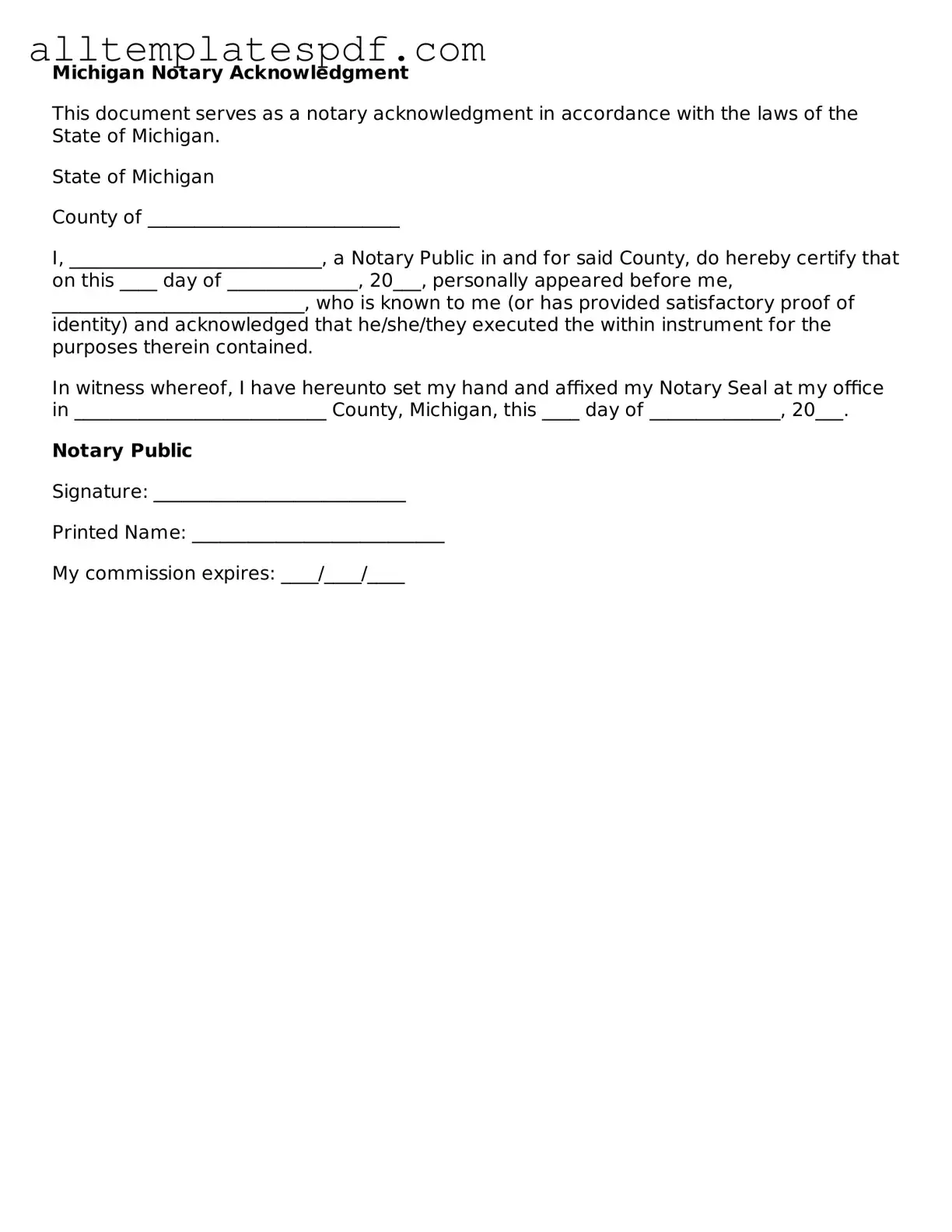Blank Notary Acknowledgement Template for the State of Michigan
The Michigan Notary Acknowledgement form is a legal document used to confirm that a signature on a document was made in the presence of a notary public. This form serves to authenticate the identity of the signer and ensures that the signature is valid. Understanding how to properly fill out this form is essential for anyone needing notarized documents in Michigan.
Ready to fill out the Michigan Notary Acknowledgement form? Click the button below!
Open Editor
